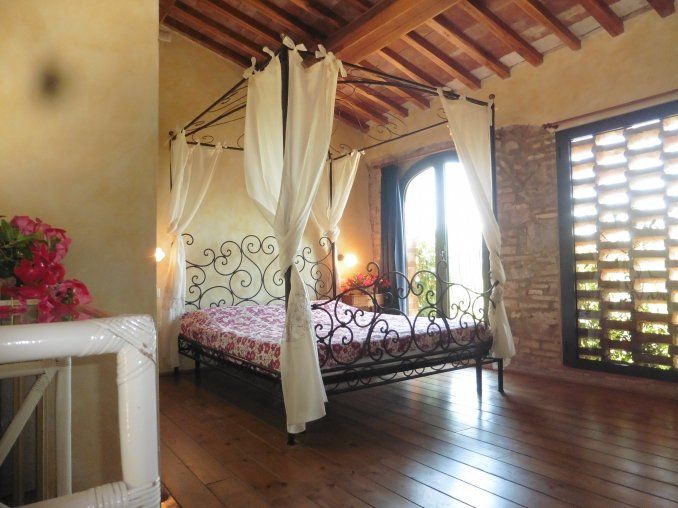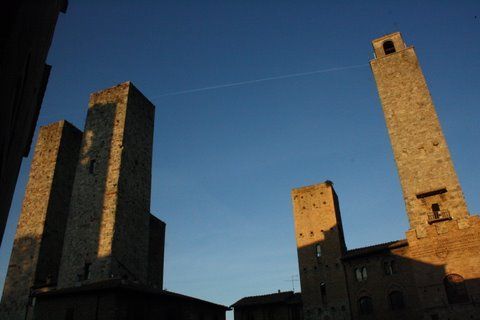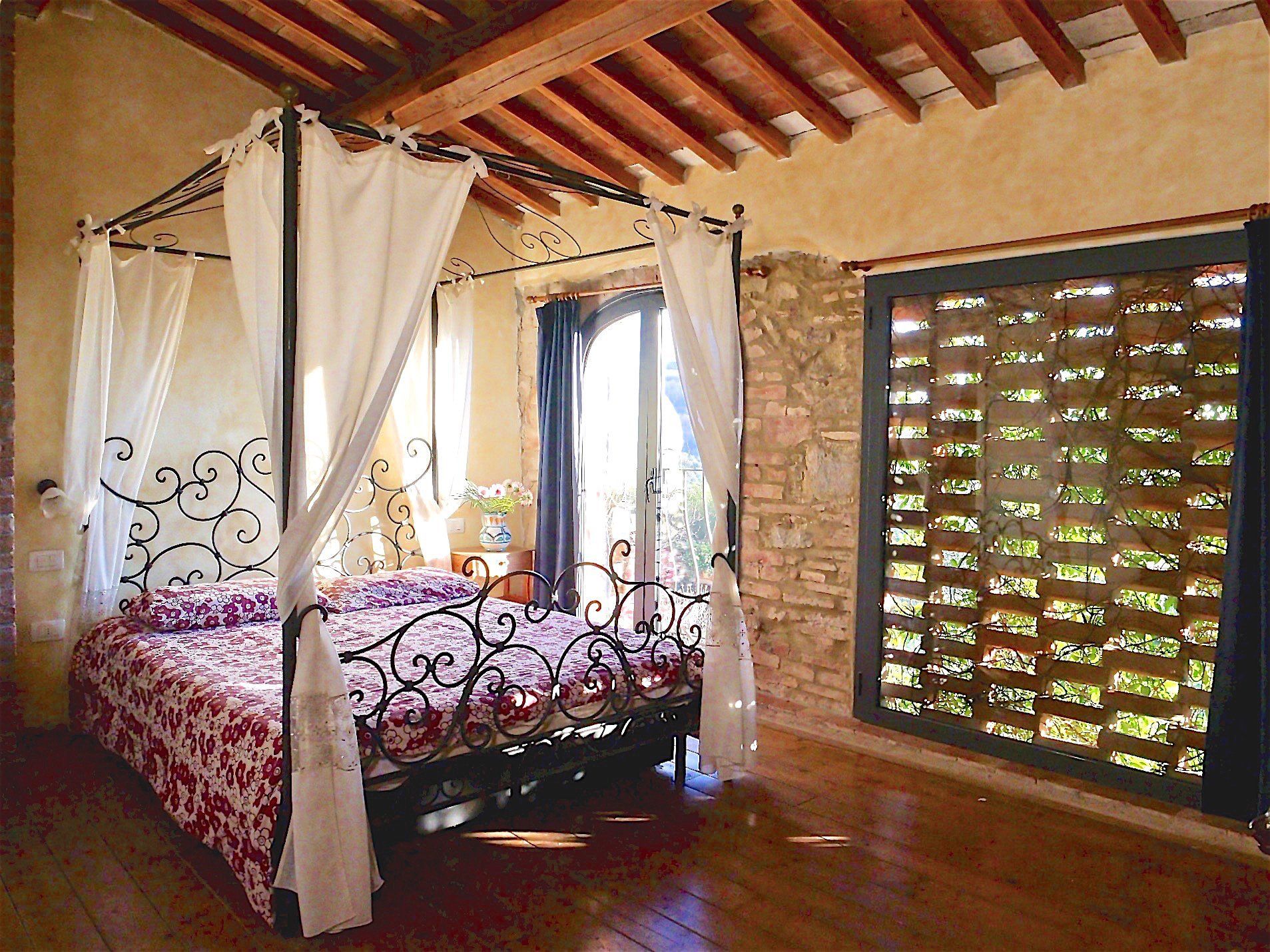S. Gimignano
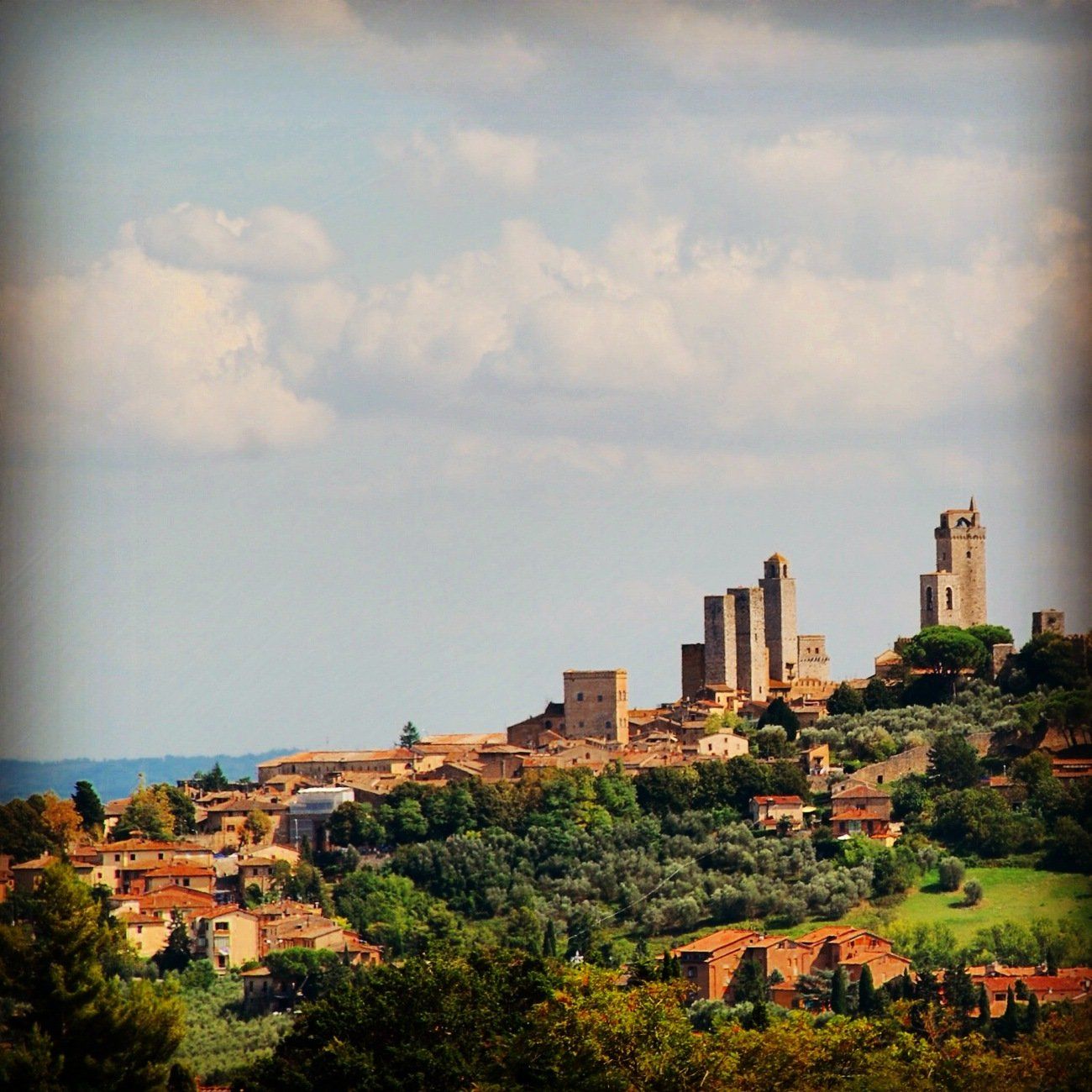
Slide title
Scrivi qui la tua didascaliaButton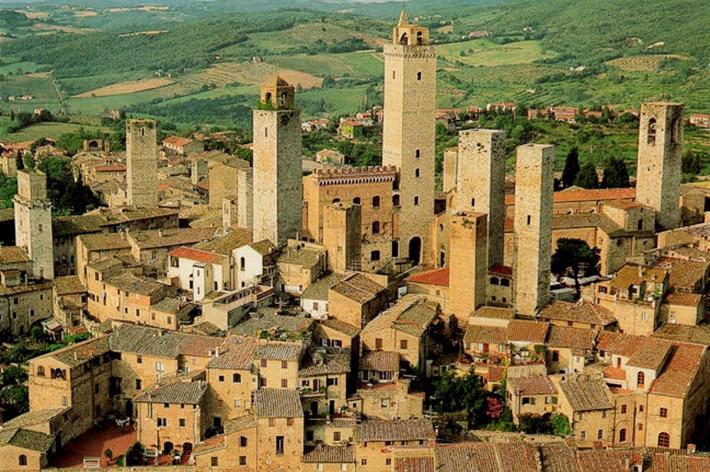
Slide title
Scrivi qui la tua didascaliaButtonSlide title
Scrivi qui la tua didascaliaButton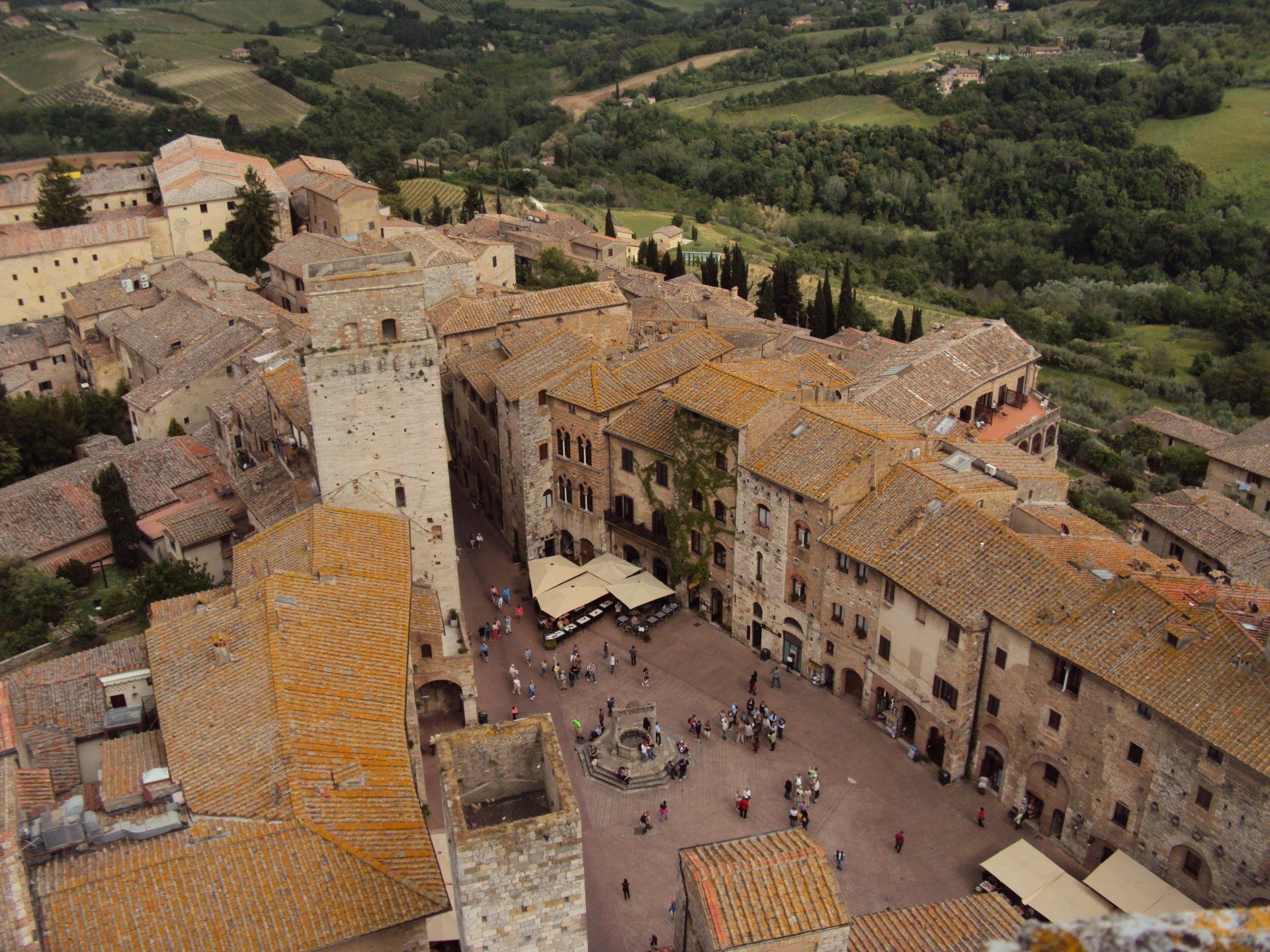
Slide title
Scrivi qui la tua didascaliaButton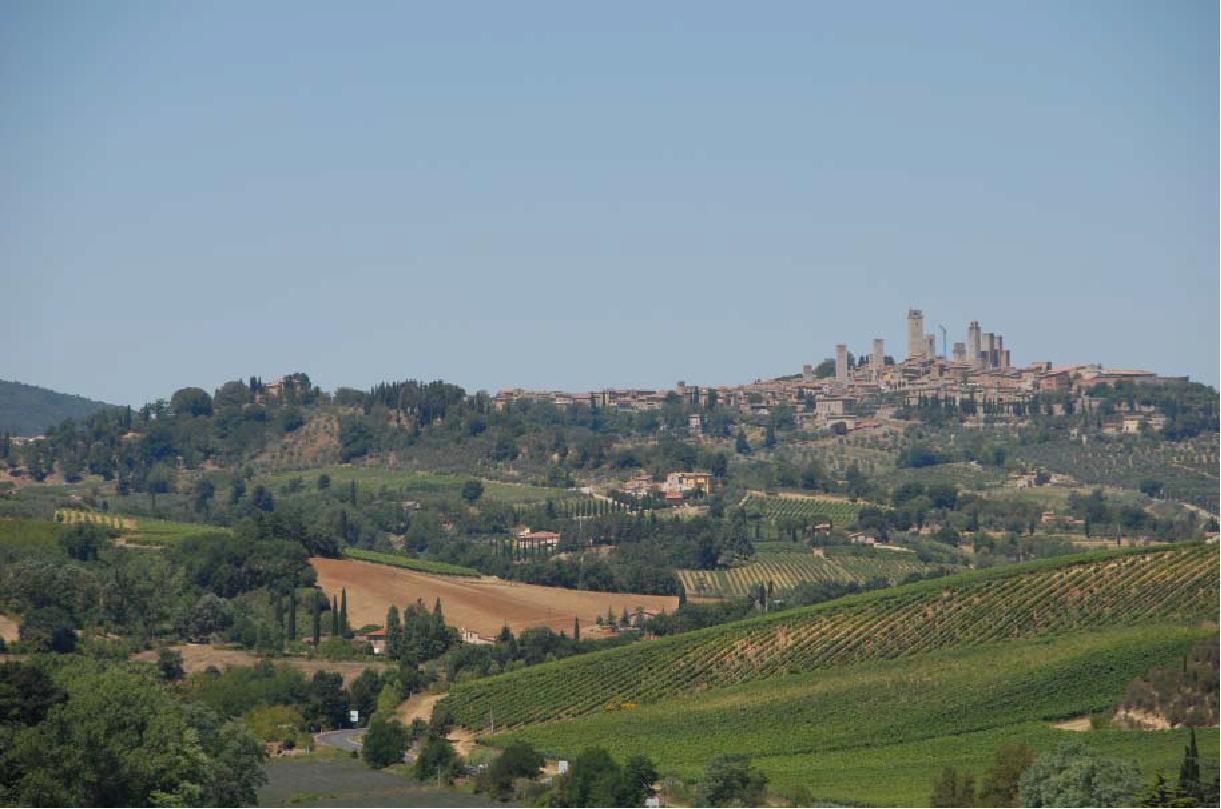
Slide title
Scrivi qui la tua didascaliaButton
-
S. Gimignano - The New York of the Middle Ages
Second for tourists only to the two giants of Siena and Florence, S. Gimignano, a town built on an ancient Etruscan hill, reached the peak of its splendour between the ninth and the eleventh centuries. The main road, in fact, was Via Romea which connected Rome to the transalpine provinces and which crossed Via Pisana in the Elsa Valley.
The charming town was named after the Holy Bishop of Modena – S. Gimignano -, credited with having saved it from the barbarian hordes.
The primitive nucleus lay between the two reference points nearest to the crossroads, the hill of the Tower (where the bishop’s castle was to be later built) and Montestaffoli, the future centre of secular power.
There were as many as nine lodgings for the merchants who came to the town every day and, as regards the local population, every family of a certain importance attempted to demonstrate its prestige by building a tower next to its house: there were as many as 72 of these slender constructions but most of them no longer exist.
The damage caused by dire events such as plagues and famines, decimated the population and saw many of the building structures collapse. This is a town where you can still breathe the atmosphere of the past. Surrounded by picture-postcard scenery, an aimless wander among the towers that give San Gimignano its distinctive skyline is like taking a 1000-year leap back in time.
The genteel charm of the streets and alleyways works its way around the town, passing ancient and prestigious buildings, small squares, churches, monasteries and museums.
From the architectural and urban point of view, S. Gimignano offers extremely particular perspective scenarios, such as the two adjoining squares, Piazza della Cisterna and Piazza del Duomo (or Collegiate), right in the middle of the town. Both have an irregular shape and are bounded by imposing stone buildings strengthened with towers: the latter (15 survivors) preserve the brick herring bone flooring that was characteristic of the Middle Ages.
While the Collegiate Square has a trapezoidal shape and is the centre of political and religious life, the Cisterna Square, with its well built in the middle in 1273 (then extended in 1346) to collect rain water, was once the location for markets and festivals. The octagonal well makes an elegant contrast to the triangular shape of the square which is built by the homes of the ancient families of the town (such as the Ardinghelli), the tower of the Becci and Palazzo Cortesi.
It’s best to stop off for a while at this ancient well in order to admire the wonderful view, photograph the medieval world surrounding you or simply close your eyes for a moment.
-
Route advice
A car is required to reach S. Gimignano from both Agriturismo I Pitti and Casa Rowe B&B.
The roads that can be traveled are 2:
- with the A11 motorway towards Florence, then the A1 motorway, Impruneta exit, then the superstrada for Siena, S. Gimignano exit
- along the provincial road that leads to Empoli, Certaldo and finally S. Gimignano
In both cases, except in heavy traffic conditions, the travel time is more or less similar. The provincial road offers beautiful landscape views.
5/8/2025
S. Gimignano - The New York of the Middle Ages A brief history of the city

Slide title
Scrivi qui la tua didascaliaButton
-
Free app to visit S. Gimignano for iPhone and Android
The app is a free mini-guide to the city of San Gimignano translated into 7 languages (English, French, German, Spanish, Japanese, Russian, Chinese) with information on:
- Historical outline of the city
- Museums and main attractions opening hours
- Annual events
- Information on parking and transport
Download it now for free at following link
Free app to visit S. Gimignano for iPhone and Android
5/8/2025

Slide title
Scrivi qui la tua didascaliaButton
-
S. Gimignano - The Town Hall - Torre Grossa
Among the medieval towers that make San Gimignano unique worldwide – there are now 12 official ones, with Torre dei Becci, Torre dei Cugnanesi, Torre del Diavolo, Torre degli Ardinghelli, Torre Chigi, Torre dei Salvucci, Torre di Palazzo Pellari, Torre Pettini, Torre Ficherelli, Torre Campatelli and, the oldest, Torre Rognosa – there’s one that dwarfs all the others with its 54 meters of height, offering an impressive view over the towered town and the whole of the Valdelsa: it’s Torre Grossa, which is located in Piazza Duomo, next to Palazzo Nuovo del Podestà. According to the documents found, building work began on it on 21 August 1300, about four months after Dante
stayed in San Gimignano, and it was finished in 1311. Like all the towers in San Gimignano, the tower has a square base and lies over a vaulted passage, whereas there is a bell tower space at the top, surrounded by a striking walkway protected by a parapet. Torre Grossa is the only one that’s open to the public and can be visited with the same ticket as used for the Civic Museum, which is located on the upper floors of the town hall – also called Palazzo del Popolo or Palazzo Nuovo del Podestà, also in Piazza del Duomo. It houses important works of art of the Florentine and Sienese school from the 13th to the 16th century, with works by artists such as Coppo di Marcovaldo, Lippo Memmi, Benozzo Gozzoli, Filippino Lippi, il Sodoma and Pinturicchio.
Torre Grossa
Piazza Duomo, 2
S. Gimignano
-
S. Gimignano - Spezieria (drugstore) di S. Fina and Archaeological Museum
The complex of the former Conservatorio of Santa Chiara, the product of successive additions built between the 17th and 19th centuries, stands in Via Folgore da San Gimignano and is divided onto two floors: the lower floor currently houses the Archeological Museum. Boasting a large collection of artifacts discovered around San Gimignano, the Museum traces the history of the area from the archaic Etruscan period up to the 18th century, focusing in particular on topics regarding distribution and forms of settlement, and the organization and techniques used in the production of ceramics and glass. It also illustrates how an Etruscan bread oven worked and gives examples of the range of utensils used in a medieval dining-room and kitchen. The material from the "Spezieria dello Spedale di Santa Fina ", one of the largest pharmacies in the city founded in the mid 13th century, is also exhibited on the same floor.
The exhibition, which is evocatively displayed, reproduces the layout and original scents of the pharmacy, one of the oldest in Tuscany. It is divided into the "kitchen ", where the remedies were prepared, and the "bottega" where the products were sold. All the products were stored in extremely good quality ceramic and glass vases dating back to the period between the 15th and 18th centuries. Many ancient medicinal preparations are also exhibited, like scorpion oil, as well as some of the components used to prepare the remedies, like mandrake or precious gems.
S. Gimignano - The Town Hall - Torre Grossa - Spezieria di S. Fina entrance time and costs
5/8/2025
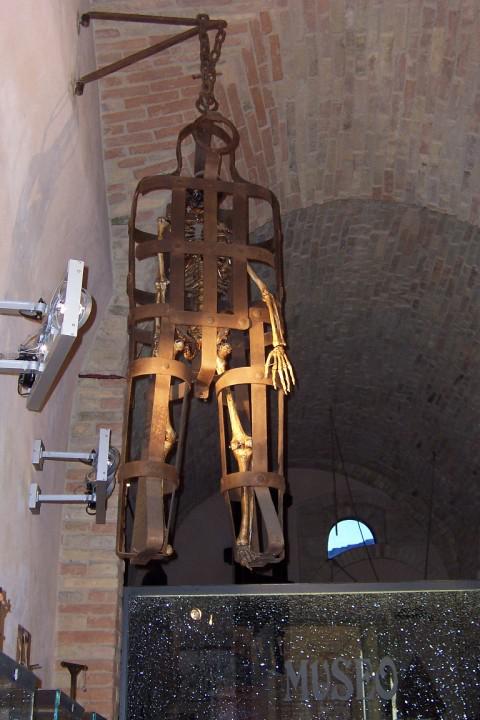
Slide title
Scrivi qui la tua didascaliaButton
-
S. Gimignano - Torture Museum and Death Penalty Museum
A visit to the most famous turreted city in the world cannot fail to include a stop at the San Gimignano Medieval Criminal museum, a few steps from the characteristic Piazza della Cisterna, in the centre of town.
Here can be found one of the most unnerving museum expositions in the world with more than 100 instruments and atrocious machines used for torture and to apply the death penalty. The small Museum winds through rooms and narrow corridors and tells the dramatic and terrifying story of medieval torture and its worst dark side. Next to the displayed objects and instruments are documents that date back to the Inquisition, the ecclesiastical institution founded by the Catholic Church to investigate and punish the supporters of theories that were considered contrary to the church through a special court. In the Medieval Criminal Museum, visitors can see famous devices such as the “Iron Maiden”, “guillotine”, “rack”, “interrogation chair” and “chastity belt”, but also lesser known and equally macabre devices such as the “heretic’s fork”, “flute of shame”, “skinning cat”, “Spanish spider” and many others that make up the collection and that highlight the perversion and horrifying human imagination in an era linked to a history of pain, torture and excruciating death.
-
Opening time and tickets
The Museum is divided into two different locations:
Torture Museum
Via San Giovanni, 125.
Hours: Every day from 10 to 19 (in winter only Saturday and Sunday)
Prices: Full € 10 - Reduced € 7
Ticket valid for free entry to the Death Penalty Museum
Information: tel. +39 0577 940526
Death Penalty Museum
Via San Giovanni, 82
Hours: Every day from 10 to 19 (in winter only Saturday and Sunday)
Prices: Full € 10 - Reduced € 7
Ticket valid for free entry to the Torture Museum
Information: tel. +39 0577 940151
S. Gimignano - Torture Museum and Death Penalty Museum entrance time and costs
5/8/2025
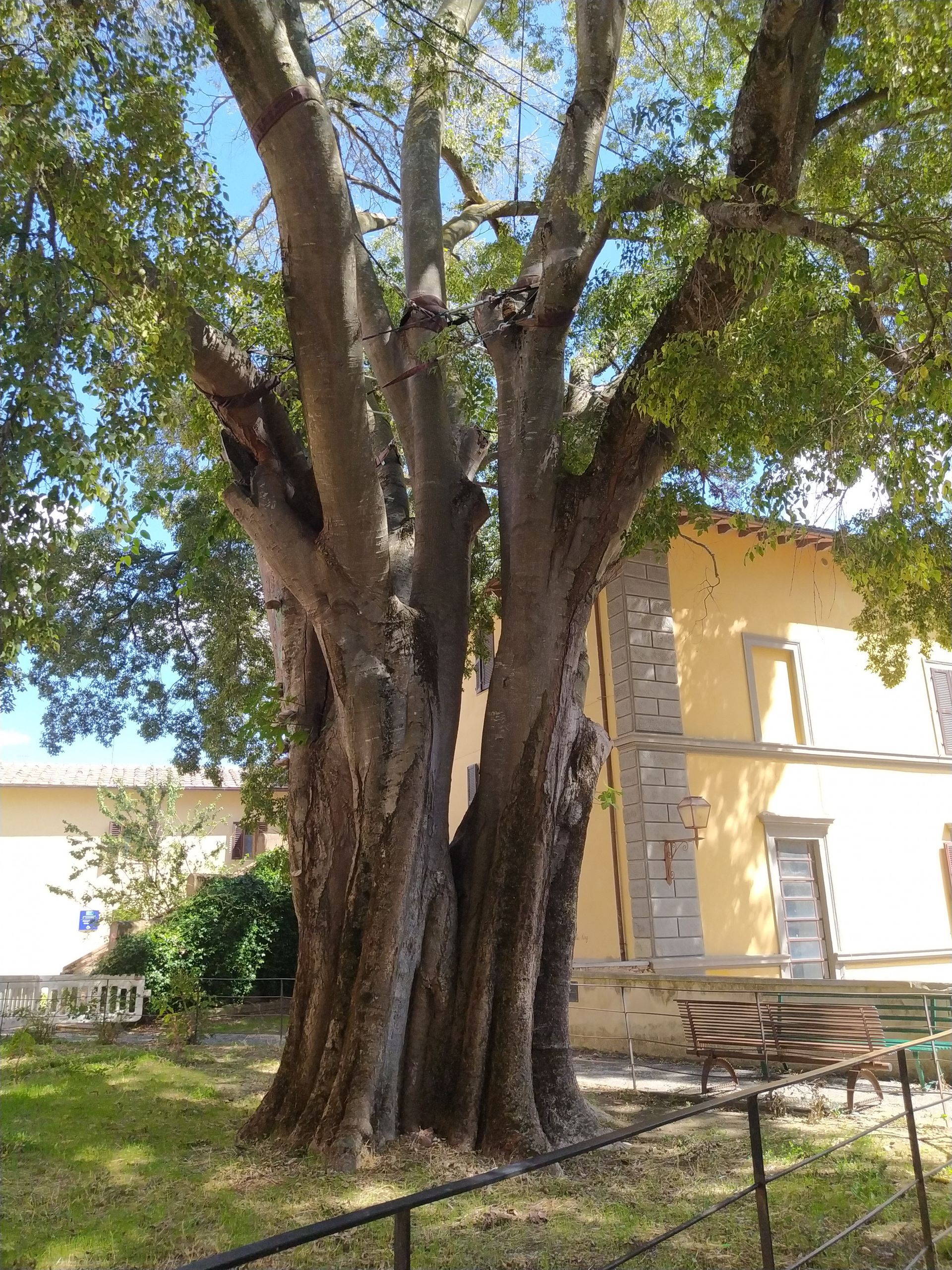
Titolo diapositiva
Scrivi qui la tua didascaliaPulsante
-
The Hackberry Tree of San Gimignano
In San Gimignano there is an ancient tree (almost 200 years) filled with history.
In a small garden in front of the town library on Via Folgore in San Gimignano, there is a majestic hackberry tree, the Bagolaro (Common name in Italian for Hackberry Tree - Celtis australis) which is also known by the name of spaccasassi (stone-breaker) because of its highly developed and robust root system that spreads across the surface and tends to raise the earth.
In folk tradition the name bagolaro comes from the fact that at dusk its branches gives refuge to flocks of birds whose chirping makes it noisy and rowdy. In reality, its etymology is clear. Bagolàro is derived from bagola (bacca), which means berry. In fact, this tree produces a large, yellow pea-sized fruit that changes into a violet brown when mature that is much appreciated by birds.
Its wood is light, hard, flexible, strong and valued for use in furniture, handles, agricultural tools and lathe works. It is very appreciated for its resistance to urban pollution and for the thick shade that its foliage produces.
The San Gimignano exemplar is 21 meters tall with a 688 centimeter circumference (as of August 2022), and due to its venerable age, it has been included in the Register of Italian Monumental Trees (RAMI), a volunteer organization that promotes the awareness and protection of monumental trees in Italy.
More info:
https://ilregistrodeglialberi.it/
17/11/2025
The Hackberry Tree of San Gimignano

Titolo diapositiva
Scrivi qui la tua didascaliaPulsante
-
Saffron from S. Gimignano
San Gimignano and Its Connection to Saffron
San Gimignano is an extraordinary example of a medieval town that has remained intact in its urban layout and architectural structures. It is located on a hill 334 meters high, at the crossroads of the Via Francigena and the road connecting Siena to Pisa. The town experienced significant growth during the Middle Ages thanks to its strategic position and the agricultural wealth of the surrounding territory. Among the most prized products of the area is saffron, known as "red gold" for its high economic and cultural value.
Saffron: A Precious Spice as Valuable as Gold
Saffron has been widespread in Europe since the Middle Ages and originates from the Middle East. Its name comes from the Arabic-Persian word za’faran, which refers to the golden-yellow color typical of this spice. Saffron comes from the Crocus sativus flower, a member of the Crocus family, which was once also used as a medicinal plant for a wide range of ailments. Each flower has three red stigmas, measuring between 25 and 30 millimeters long, which, once harvested and dried, become the spice.
Saffron Production
Saffron has been known for millennia and is part of numerous culinary traditions worldwide. The main producing countries in ancient times (Iran, Spain, India, and Greece) still dominate the global market today. However, saffron is also cultivated in Italy, with some excellent varieties such as Abruzzo saffron and San Gimignano saffron (SI), both of which have the PDO (Protected Designation of Origin) label. San Gimignano saffron is protected by a Consortium and has been produced since the 1200s, when it was used, along with the Florentine florin, to pay municipal debts. Other prominent producing regions include Sardinia, Umbria, and Marche.
Why Is It So Expensive?
With a price that can exceed €65,000 per kilo, saffron is the most expensive spice in the world, surpassing even vanilla. This high value is justified by the harvesting process, which requires great care and manual skill to avoid breaking the delicate filaments. To obtain 1 kg of saffron, around 150,000 flowers and approximately 400 hours of labor are needed for harvesting and drying. Additionally, during the drying process, Crocus sativus filaments lose about 4/5 of their weight.
To ensure the highest quality and prevent counterfeiting, San Gimignano saffron is sold exclusively in whole stigmas, which have an intense dark red color, inside packages bearing the PDO seal. Currently, the annual production is around 60–70 kg, cultivated on an area of 6 to 7 hectares.
How to Use It
Saffron is used both as a seasoning and as a natural coloring agent, containing more than 150 volatile compounds, including safranal, an essential oil that gives it its unmistakable aroma. It can be purchased in powder form, to be added directly to dishes, or in stigmas, which must be soaked in hot water for a few hours to fully release their fragrance. It is used in numerous culinary preparations, from first courses to meat dishes, sauces, and baked goods, including muffins, shortcrust pastry, and zuccotto cake. Additionally, saffron is found in liqueurs and in the production of sheep’s milk cheeses.
Beyond its culinary uses, this spice has important pharmacological properties: it aids digestion, has calming and analgesic effects, and acts as an antioxidant; it stimulates metabolism and strengthens the immune system. Not surprisingly, since the Middle Ages, it has also been used in painting and as a trading commodity. As early as the 1200s, at the gates of San Gimignano, there were official “weighers” responsible for checking the quantities of saffron entering and leaving the town, while other officials—speziali, circatori, and taratori—ensured its quality and set its price.
Saffron Cultivation
Growing Crocus sativus is a good way to obtain saffron at a lower cost. The bulb flowers in a few weeks: it is planted at the end of summer and harvested in October. This plant prefers well-drained soil rich in organic matter, thrives in sunlight but not humidity, and withstands frost well. One hundred bulbs can produce about 1 gram of saffron in the first year of cultivation, with a progressive increase in the following years. After harvesting, the filaments must be dried and stored in a cool, dark place.
5/8/2025
Saffron from S. Gimignano



